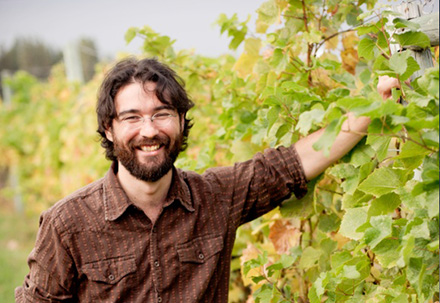Survey due July 1 seeks opinions about state of current system in British Columbia
By Peter Mitham, Wines and Vines
One short year after processing the province’s first sub-appellation proposal, the British Columbia Wine Authority faces an industry-led movement to overhaul its system of geographical indications (GIs).
“We just had the Golden Mile Bench sub-GI approved, however, the way the regulations are written it could be that is the only sub-GI that British Columbia wine will ever get,” said Ezra Cipes, CEO of Summerhill Pyramid Winery in Kelowna and chair of the B.C. Wine Appellation Task Group.
The 15-member task group formed at the end of March and has met twice since then. Supported through a mix of federal and provincial dollars (James Mack of the B.C. Ministry of Agriculture is a member), the group gave itself six months to complete its work.
The issue, Cipes explained, is that the existing appellation system developed 25 years ago and entrenched with the formation of the B.C. Wine Authority in 2008, carves the province into six large geographical areas. New GIs are possible only for “geographically distinct” areas with “commercially viable” volumes of grape production and wines exhibiting “distinctive characteristics related to shared soil, topography and climate, enhanced by the adoption of specific production practices.”
On the surface, this sounds appropriate, as vineyards have sprouted in regions previously considered marginal or outright unsuitable for wine grape production, including the Fraser Canyon, Shuswap, Thompson and Kootenay regions.
But there have also been movements to single out regions within existing areas for subappellation status. While wineries in the Golden Mile Bench were the first to achieve a subappellation, speculation has also surrounded the regions of Lake Country, Naramata, Black Sage Road and others.
However, most of the movements reflect the locations of wineries rather than viticultural factors.
The well-known Naramata Bench, which is home to popular wineries but relatively few vineyards, is a case in point.
“Maybe Naramata could make a case—maybe,” Cipes said. “Not definitely, though. And if they did, the regulations have it that it would have to be based almost purely on science.…So you might have only a little corner of the Naramata Bench, and all these other producers that have always been called the Naramata Bench, and thought of themselves as the Naramata Bench, and are the Naramata Bench, might be left off of that appellation if we don’t reform things.”
Complicating discussions regarding appellations in British Columbia is the fact that wineries that aren’t registered with the B.C. Wine Authority (more than 80 of the approximately 240 licensed grape wineries in the province) can advance unsubstantiated claims regarding the origin of their grapes, and no one’s checking.
Several complaints regarding the use of registered terms have occurred, usually leading to wineries registering with the BCWA and undergoing audits to ensure compliance.
Certification of origin isn’t mandatory in British Columbia, however, a quirk in the system originally focused more on wine quality than grape origins. Wineries can still use non-registered terms to identify the origin of grapes—say, “Naramata Bench” or “Black Sage Bench”—and sell their wines as “Product of Canada” (rather than British Columbia) without having to document the claim.
“There’s nobody checking that if you don’t register. If you say it’s from Naramata Bench, there’s nobody checking that. It could be from Oliver, it could even, frankly, be from Ontario,” Cipes told Wines & Vines. “All those label claims are completely unregulated currently. And I think there’s an issue there that, as an industry, I’m glad we’re looking at.”
Stakeholder survey
A survey sent to industry stakeholders June 15 canvasses opinions regarding the current state of the province’s appellation regulations, as well as the audits designed to back up label claims.
Producers’ views regarding the ongoing value of the 25-year-old B.C. Vintners’ Quality Alliance (VQA) standard is also addressed.
The survey follows a series of town hall meetings with producers around the province that took place across the Okanagan Valley, in the neighbouring Similkameen, on Vancouver Island and elsewhere.
While not everything made it into the survey, Cipes said the consultations meant that certain issues—such as the idea of a more robust BC VQA standard—were largely ruled out.
“People were not super keen on (BC VQA),” he said. “We already have wine competitions and critics to tell us; we don’t need a government body to tell us who’s making the good wine.”
Task group member John Skinner of Painted Rock Estate Winery, one of the original advocates of a stronger VQA standard (alongside Rob Ingram, Chris Coletta and Harry McWatters), has no regrets.
A stronger standard might have taken vineyard practices into account and analyzed winemaking, but quality concerns have largely been put to rest.
“VQA performed a good function when it was needed to save the public from gut-poison, but really I think it’s something that’s more of a line of paint on the road than a bump or a hurdle to get over,” he said. “I think the market is your best arbiter.”
The survey will be open till t he end of June, and the results considered at a third meeting of the task group in mid-July. Recommendations will follow by the end of September and be submitted to the BCWA, which Cipes said will put them to an industry vote. Based on past plebiscites, government approval for any changes would likely not occur before 2016.
